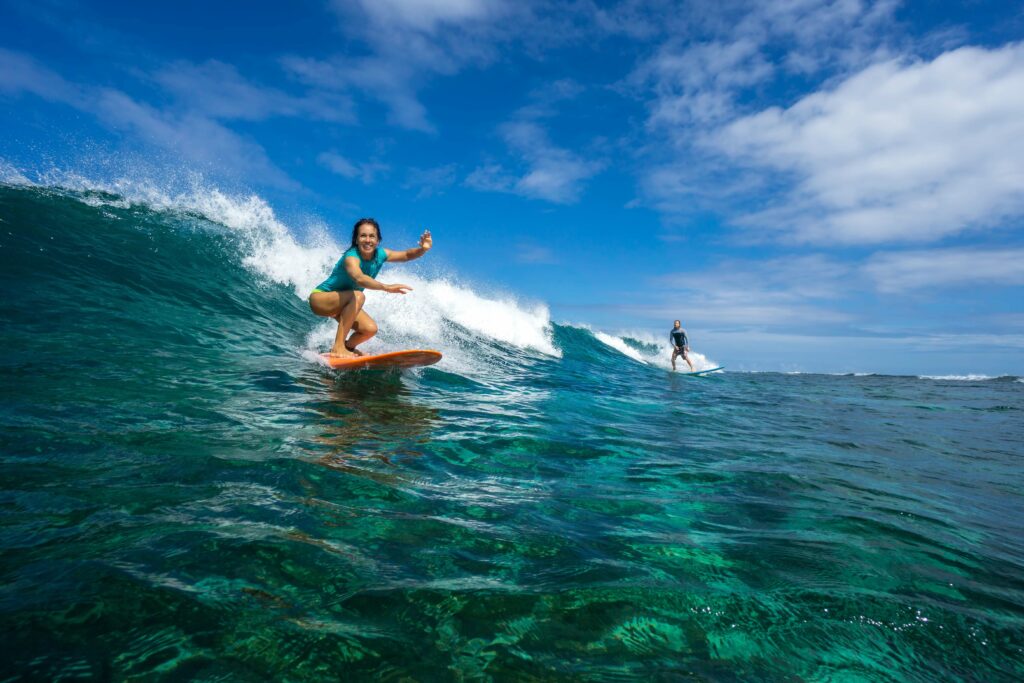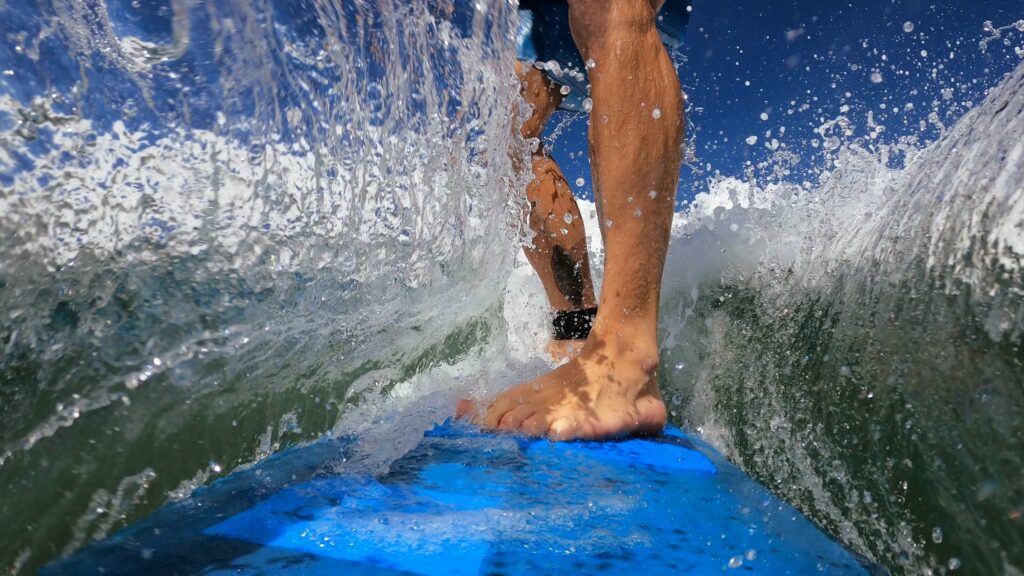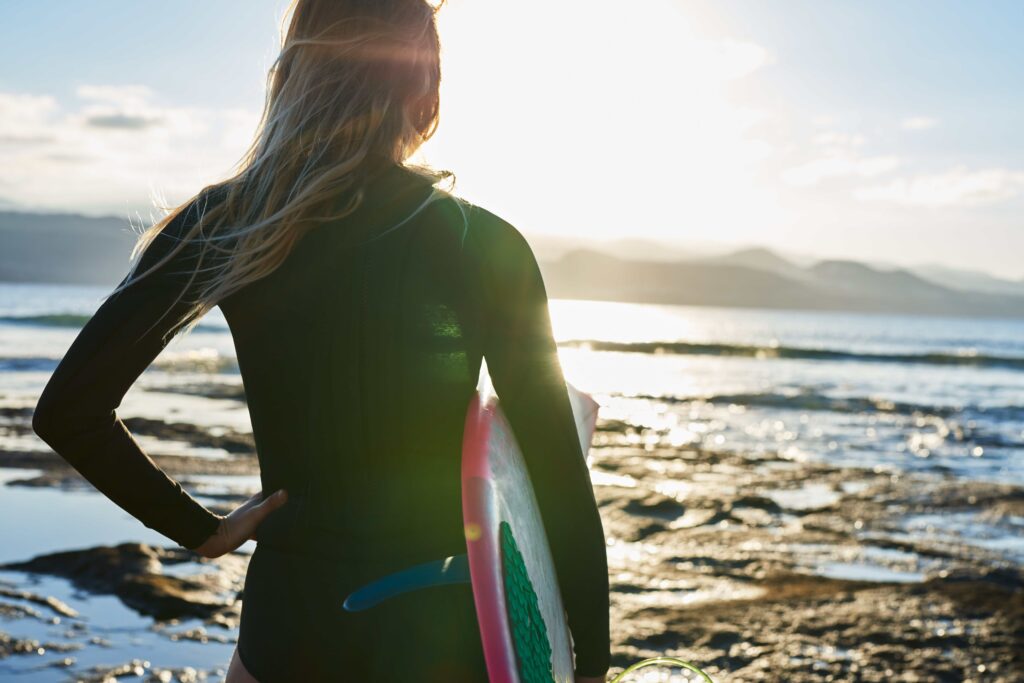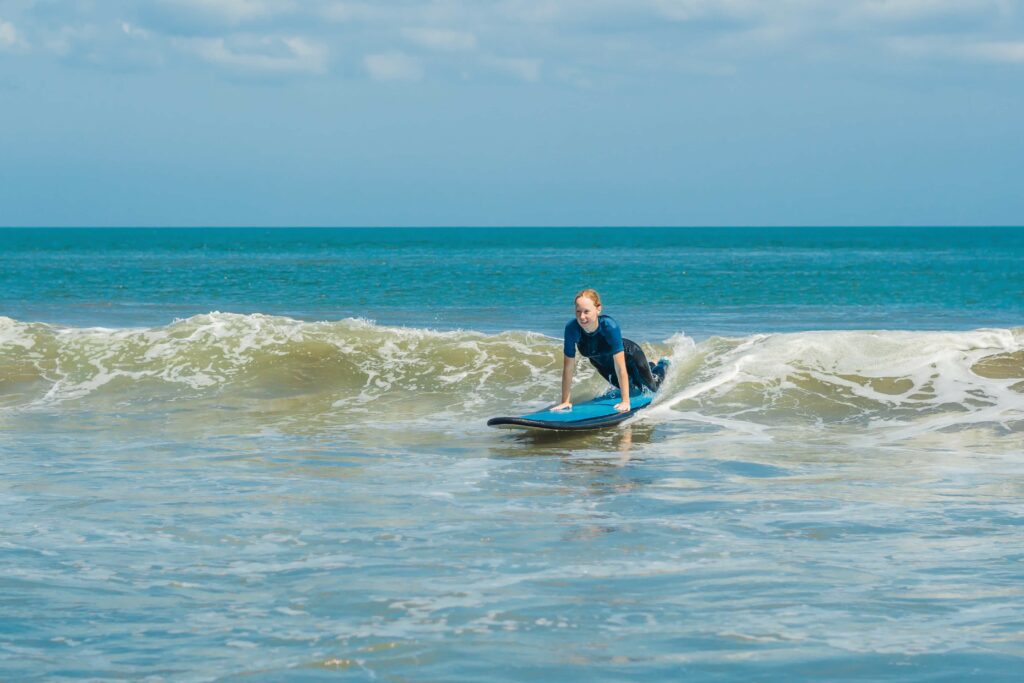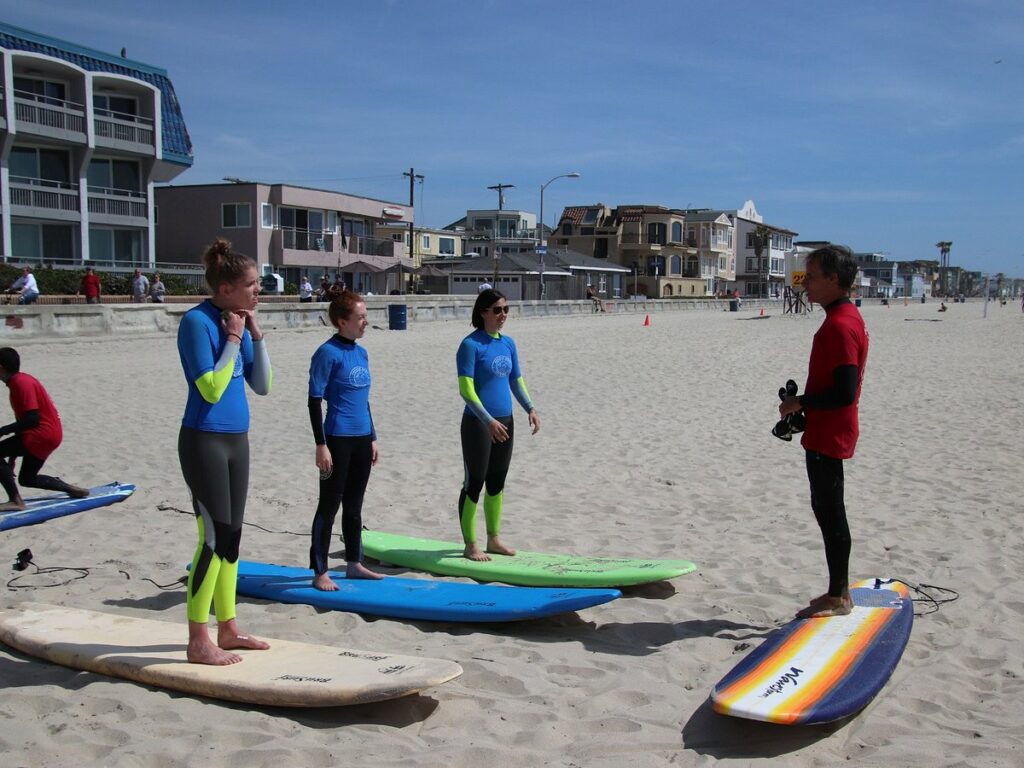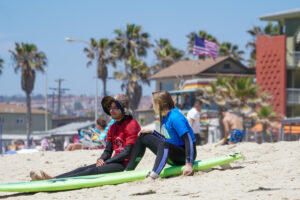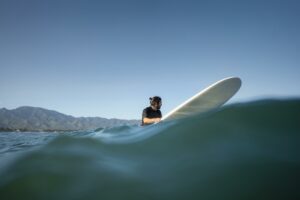Essential Tips on Learning How to Surf
Learning how to surf might seem daunting at first, but with the right guidance and practice, you can ride the waves like a pro. In this guide, we’ll walk you through the essentials of mastering the art of surfing, from choosing the right equipment to catching your first wave. Whether you’re a complete beginner or looking to refine your skills, this guide will help you learn to surf and ride the waves like a pro!
Learning How To Surf: The Basics
Before you even hit the water, it’s essential to grasp the fundamental elements of surfing:
Finding the Right Surfboard
The selection of your surfboard plays a pivotal role in your learning process. For novices, it’s advisable to opt for a larger and more stable board. This choice offers enhanced steadiness and buoyancy, providing an optimal platform for mastering the basics with greater ease.
Understanding Wave Breaks
Prior to immersing yourself in the waves, take the time to observe how they break along the shoreline. Waves exhibit diverse behaviors, breaking both close to the shore and farther out. Familiarizing yourself with these wave patterns equips you with the knowledge needed to position yourself strategically for a successful ride.
Mastering the Pop-Up
The pop-up maneuver serves as the fundamental transition from lying flat on the board to standing upright. To hone this essential skill, dedicate time to practicing the motion on the sand before executing it in the water. This preparatory step ensures a smoother and more confident execution once you’re on the waves.
Paddling Techniques
Efficient paddling forms the bedrock of wave-catching proficiency. Employ elongated and fluid strokes in conjunction with proper body alignment to navigate the water’s expanse with finesse. A mastery of paddling techniques significantly enhances your wave-catching prowess.
Timing is Everything
Timing is key in surfing. Developing an acute sense of when to paddle and catch a wave can substantially boost your success rate. Dedicate time to observing the waves, allowing you to anticipate the opportune moment to initiate your paddle and seamlessly rise to your feet.
Essential Surfing Techniques
As you progress in your surfing journey, it’s important to master the following techniques:
Balance and Stance
Maintaining a low center of gravity and adopting an athletic stance while riding the waves is integral to your performance. Equally distributing your weight across the board ensures optimal stability, enabling you to navigate the swells with confidence.
Riding the Wave
Upon catching a wave, fix your gaze upon the horizon and ensure your body remains aligned with the board’s trajectory. Employ your arms to maintain equilibrium and utilize strategic weight shifts to steer your course effectively.
Turning and Carving
Once you have established proficiency in straight-line riding, commence practicing gentle turns by shifting your weight and utilizing the leverage of your toes and heels. This technique introduces an element of control and finesse to your surfing experience.
Duck Diving and Turtle Rolling
To navigate through waves approaching head-on, acquaint yourself with the techniques of duck diving (submerging beneath the wave) and turtle rolling (flipping the board and executing a roll). These techniques empower you to maneuver skillfully through the challenges posed by incoming waves.
Safety Tips for Beginner Surfers
Surfing is exciting, but safety should always come first. Here are some important safety tips:
Know Your Limits
Start by tackling smaller waves and progressively advancing to more challenging ones. Avoid the temptation to tackle waves that surpass your current capabilities.
Respect the Ocean
Acknowledge the formidable force and unpredictability of the ocean. Stay vigilant for potential hazards such as rip currents and shifting tides, and adapt your surfing plans accordingly.
Use Proper Sun Protection
Surfing exposes you to the sun’s rays. Wear a high-SPF sunscreen, a rash guard, and a wide-brimmed hat to protect your skin.
Leash and Safety
Always wear a leash to keep your board attached to you. This prevents the board from drifting away and endangering others.
Best Beginner Surfing Locations in San Diego
San Diego is a paradise for surfers, offering a variety of prime spots:
Pacific Beach: A Gentle Introduction
Renowned for its consistent waves and vibrant ambiance, Pacific Beach proves ideal for fledgling surfers seeking waves that are approachable and accommodating.
Sign up for a surf lesson in Pacific Beach.
La Jolla: A Panoramic Playground
La Jolla’s scenic grandeur is matched by waves suited to surfers of all levels. The Cove, in particular, beckons beginners to hone their skills in a breathtaking setting.
Sign up for a surf lesson in La Jolla.
Ocean Beach: A Relaxed Sanctuary
With its laid-back atmosphere, Ocean Beach extends consistent waves and a warm community spirit. Its forgiving swells provide an excellent environment for learning the essentials.
Sign up for a surf lesson in Ocean Beach.
Mission Beach: Novice-Friendly Haven
Catering to families and beginners alike, Mission Beach boasts gentle waves and an inviting atmosphere. It’s an optimal locale for nascent surfers to amass confidence and invaluable experience.
Sign up for a surf lesson in Mission Beach.
Pacific Surf School: Your Gateway to Surfing Success
When you’re ready to take your skills to the next level, Pacific Surf School is here for you. Our experienced instructors are certified and passionate about helping beginners thrive in the world of surfing. We offer private, semi-private, and group surf lessons tailored to your preferences. With us, you’ll receive personalized attention, practical guidance, and a supportive environment to boost your confidence in the water.
Learn To Surf With Pacific Surf School!
Learning how to surf is an incredible endeavor that rewards dedication, practice, and a love for the ocean. By understanding the basics, honing your skills, and prioritizing safety, you’ll set yourself up for an unforgettable surfing journey. Explore San Diego’s prime surf spots, and when you’re ready to take the plunge, Pacific Surf School is here to guide you. With experienced instructors, personalized lessons, and a range of options, you’re just a few steps away from catching your first wave and embracing the exhilaration of surfing.
Don’t miss out on the chance to conquer the waves and embark on a thrilling adventure. Explore our surf lesson options and book your spot today. Our straightforward online booking system ensures a hassle-free experience, so you can focus on what matters most: learning to surf and creating memories that’ll last a lifetime.
FAQs
Yes, surfing is for people of all ages and fitness levels. With determination and practice, anyone can learn to ride the waves.
Becoming a proficient surfer varies for each individual. It depends on factors such as practice frequency, natural ability, and dedication.
Early mornings and late afternoons often provide the best conditions, as winds are usually calmer and waves are more manageable.
Gradually challenge yourself by choosing slightly larger waves as you build confidence and skill. Always prioritize safety and listen to experienced surfers’ advice.
For colder waters, opt for a wetsuit with thicker neoprene material and sealed seams to provide insulation and prevent water from seeping in.
Regular upper body and core exercises, such as swimming and push-ups, can help improve your paddling strength and endurance.
Respect other surfers’ turns and wait your turn when catching waves. Follow the “first-come, first-served” principle and communicate with fellow surfers in a friendly manner.
Waxing your surfboard provides traction, preventing you from slipping off while paddling and riding waves. Apply a base coat and a top coat for optimal grip.
Check surf forecasts, tide charts, and local surf reports to understand wave height, wind conditions, and tide levels. This helps you choose the right time to surf.
While it’s technically possible to teach yourself to surf, enlisting the guidance of a qualified instructor is highly recommended, especially for beginners. Professional instructors can provide personalized feedback, safety tips, and proper techniques, leading to a faster and more enjoyable learning process.
Learning to surf varies from person to person. Some individuals may pick it up quickly, while others may take more time to become proficient. Like any new skill, there’s a learning curve.


